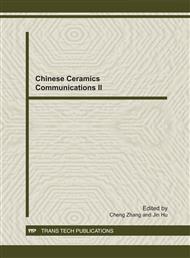p.436
p.441
p.445
p.449
p.453
p.459
p.463
p.469
p.473
Drying Model of Paste Materials in Fluidized Bed with Inert Particles and Immersed Heating Tubes
Abstract:
The mechanism of drying paste materials was investigated in a fluidized bed with inert particles and inner heats. A mathematical model is proposed to predict the specific water evaporation. The drying properties of dryer can be predicted based on the correlation equations. The drying of paste CaCO3 materials was industrial-mode experimentally carried out in a fluidized bed with inert particles and immersed heating tubes. The paste material was spray droplet in sizes range of 200~400μm with pressure nozzles or air-blast nozzles, and spray to the surface of inert particles, and the feasible drying conditions were researched. The feasible drying parameters, operation parameters and equipment parameters were researched. The results show that this drying technology can be enhanced the heat transfer and the paste materials of high viscosity can be effectively distributed into the fluidized bed, well distributed temperature in beds, large elasticity of operation, the low energy consumption. The new drying equipment has high drying capacity, small equipment size. The results can provide important meaning on theory and instructing practice for developing the new drying technology with high drying efficiency and low dissipation of energy.
Info:
Periodical:
Pages:
463-468
Citation:
Online since:
November 2011
Authors:
Price:
Сopyright:
© 2012 Trans Tech Publications Ltd. All Rights Reserved
Share:
Citation:


